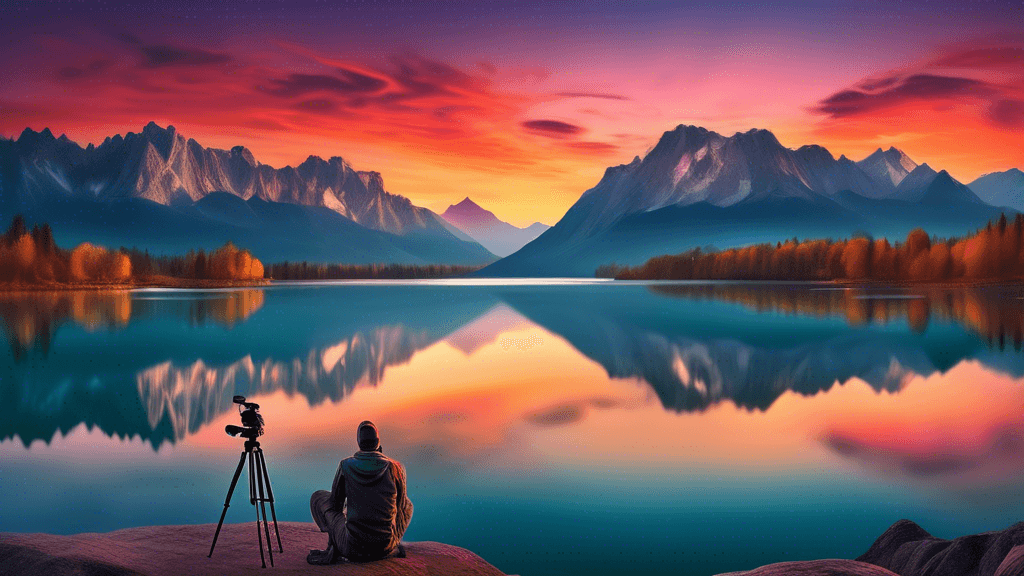
Crafting Visual Stories: The Art of Landscape Photography
Share
The Art of Landscape Photography: Crafting Visual Stories That Inspire
Landscape photography is much more than capturing the environment; it's an art form that narrates the profound connection between nature and humanity. Whether you're an aspiring photographer or a seasoned professional, understanding the intricacies of this genre can transform your photos from simple snapshots into compelling visual stories.
What is Landscape Photography?
Landscape photography involves capturing images that embody the spirit of the outdoors. It focuses on the natural and manmade features of the world, aiming to bring the viewer into the scene. From the dramatic vistas of towering mountains to the tranquil ambience of a secluded beach at sunset, landscape photography is all about the beauty, majesty, and diversity of the earth.
Who Benefits From Understanding Landscape Photography?
This form of photography is not just for professionals. Hobbyists, nature lovers, travelers, and content creators can all benefit from learning how to effectively capture landscapes. It enhances not only your photographic skills but also deepens your appreciation for nature's beauty, promoting a stronger inclination towards its conservation.
Key Techniques for Mastering Landscape Photography
Mastering landscape photography requires a blend of technical knowledge and creative thinking. Here are some essential techniques to help you capture stunning landscape images:
Understanding the Light
Light is a pivotal element in all forms of photography, particularly in landscape photography. The mood, color, and depth of your photos are all influenced by the type of light you capture.
- The Golden Hour: This period shortly after sunrise or before sunset provides soft, warm light that can add a magical quality to any landscape.
- The Blue Hour: The time just before sunrise and after sunset, known for its cool, serene light, ideal for capturing clear, crisp scenes.
- Midday Light: Often bright and harsh, it can be challenging to work with but is excellent for highlighting contrasts and textures in the landscape.
Composition and Perspective
The composition is key in landscape photography. A well-composed photograph can draw the viewer’s eye across the image and highlight the beauty of the scene.
- The Rule of Thirds: By dividing the image into thirds, both horizontally and vertically, and placing the point of interest at the intersections, you can create a balanced composition that is pleasing to the eye.
- Leading Lines: Use natural or man-made lines within your composition to lead the viewer’s eye through the photograph.
- Depth: Including elements in the foreground, middle ground, and background can add depth to an image, making it more engaging and realistic.
Renowned landscape photographer Ansel Adams once said, You don't take a photograph, you make it. This emphasizes the importance of actively composing and engaging with the environment when capturing landscape images.
The Role of Post-Processing in Landscape Photography
Post-processing is a significant step in modern photography which involves enhancing your photographs using software. This can range from simple adjustments like brightness and contrast to more complex edits like blending exposures.
Realistic vs. Artistic Editing: While some photographers prefer to keep their images as natural as possible, others view post-processing as a tool to create surrealistic artistic pieces. The choice depends on your artistic vision and the story you want to tell.
Using Landscape Photography for Environmental Conservation
Landscape photography has the power to highlight the beauty and fragility of our planet. It can play a critical role in environmental conservation efforts by raising awareness of natural landscapes that are at risk.
Photographs of melting glaciers, deforested areas, and endangered habitats can act as powerful catalysts for change, prompting public action and influencing policy makers. The emotive power of these images can not be overstated, as they bring distant environmental issues right into the public eye.
In the words of environmental photographer James Balog, The best photography is a form of bearing witness, a way to bring a single vision to the larger world.
Conclusion
Landscape photography not only beautifies our walls but also deepens our connection with the natural world, encouraging us to preserve its wonder for future generations. Whether you seek to tell visual stories, raise awareness, or simply capture the beauty of a personal moment, landscape photography offers a fulfilling path.
Are you ready to capture landscapes that not only tell stories but also inspire change? It’s time to grab your camera and step outside into the vast, beautiful world that awaits. Who knows what stories you’ll find?





